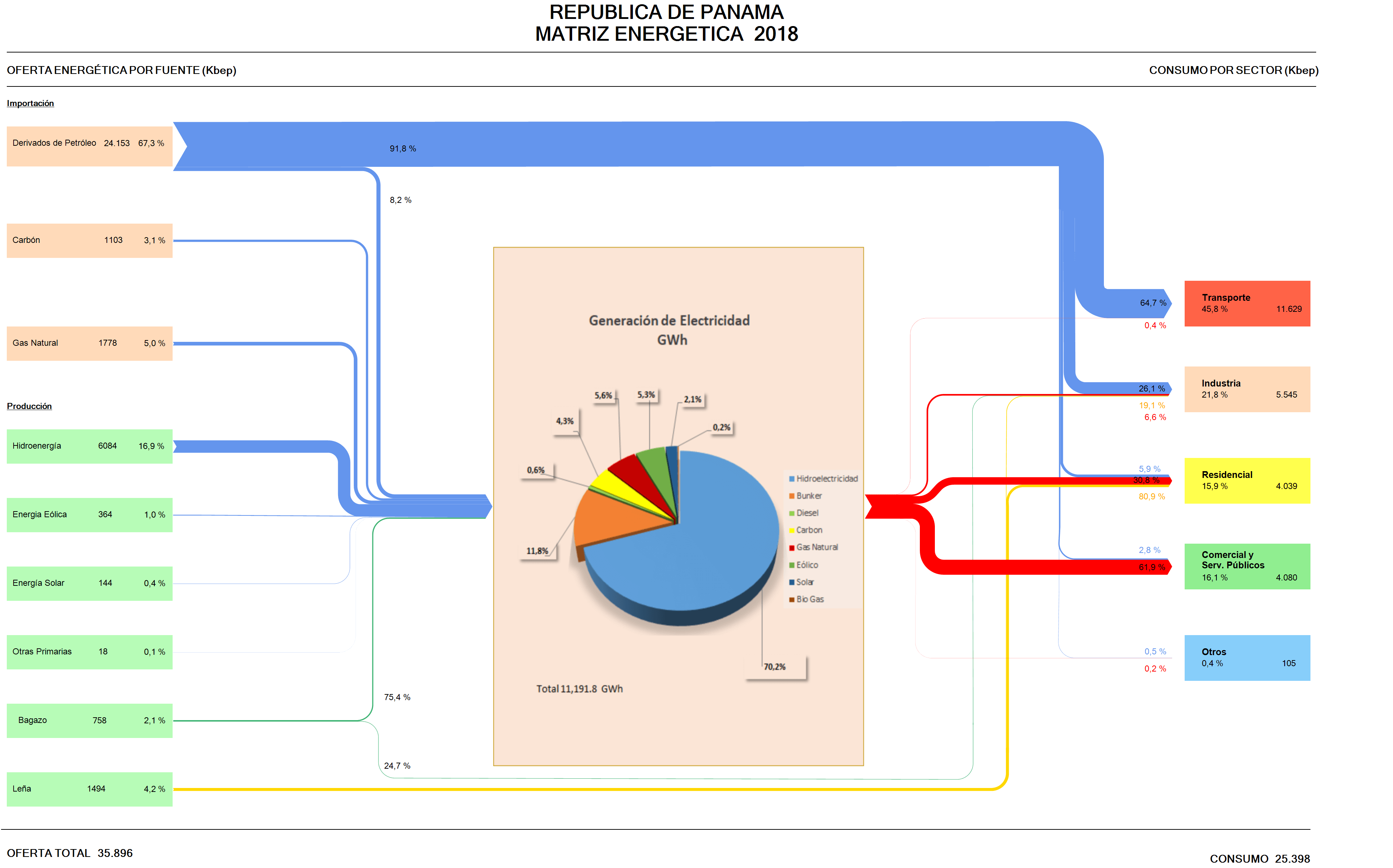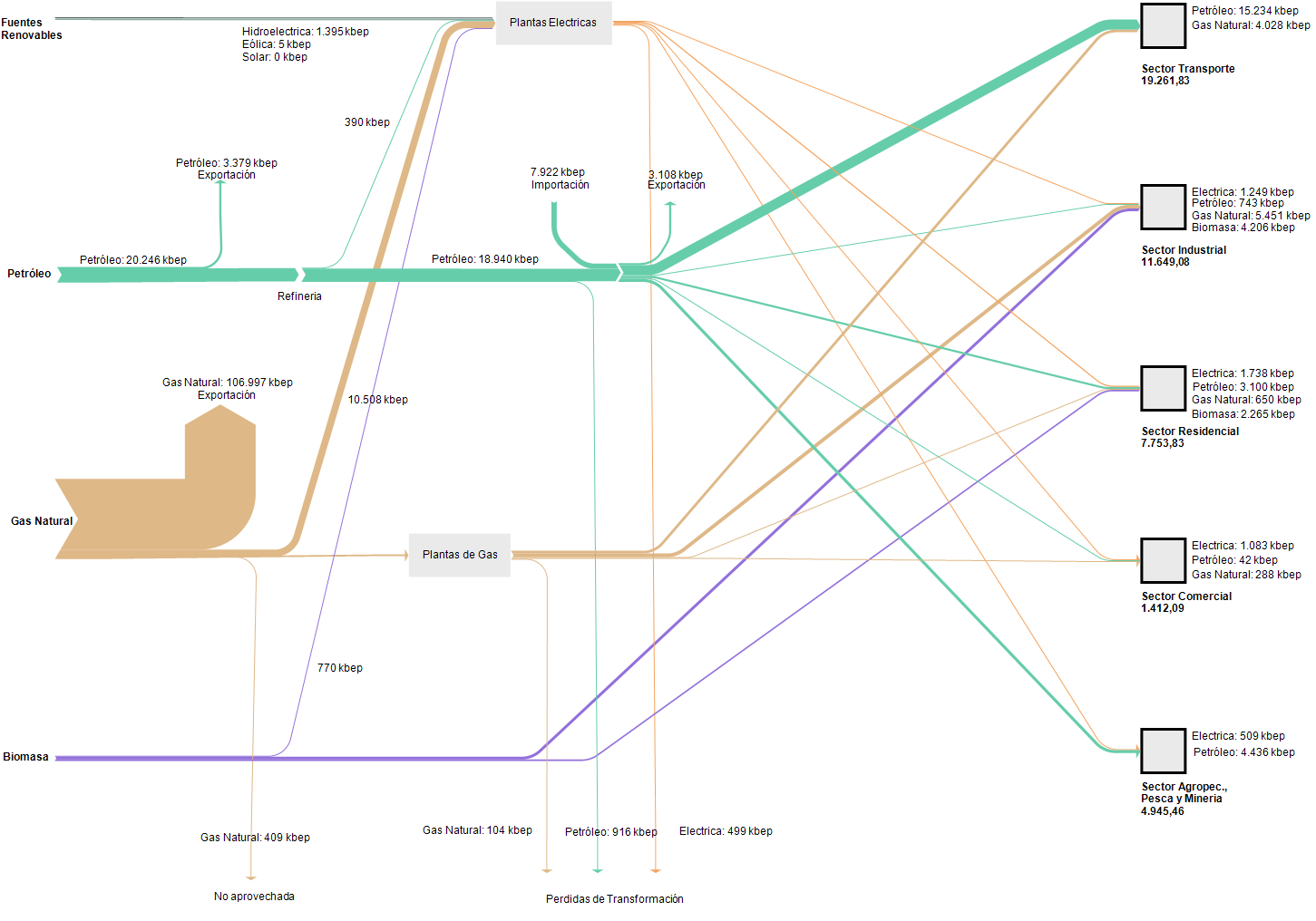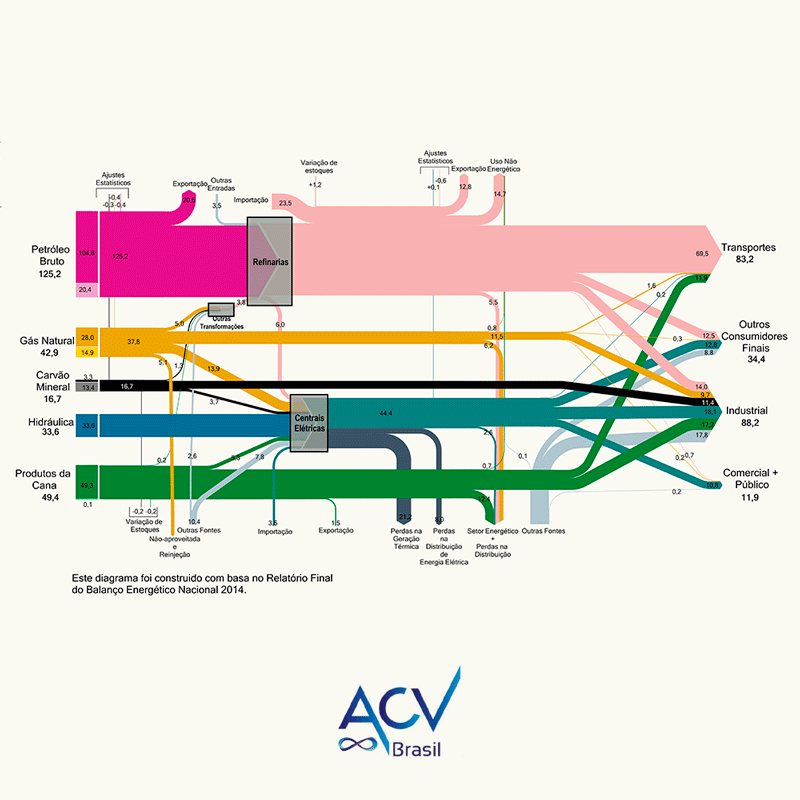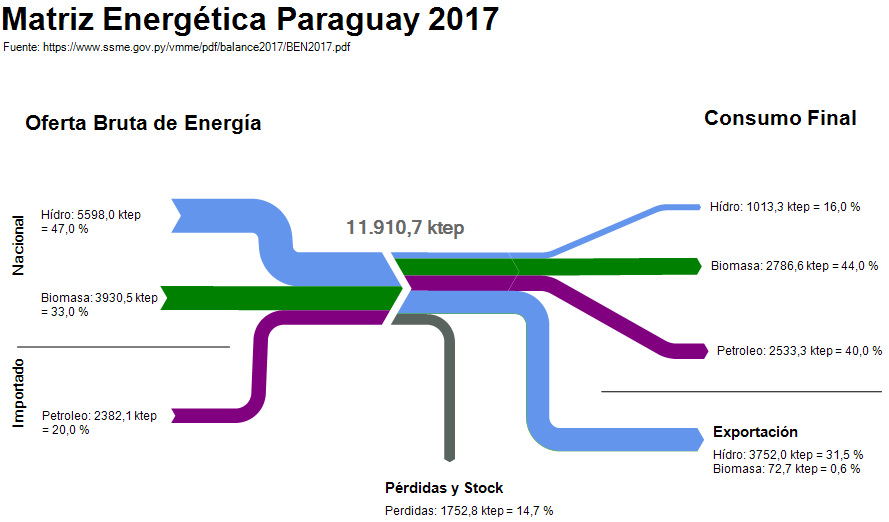Some time has passed since the last post in my mini-series featuring energy balances of Latin American countries. Panama was last in July 2019. So today, here is the Balance Energético Nacional (BEN) for Honduras.
This Sankey diagram can be found on page 43 in the report ‘Balance energético: un panorama del actual sistema energético hondureño’ (2018) published by Secretaría de Energía, Gobierno de la República de Honduras.
The figure shows energy origin (left column), energy type (middle column) and consuming sectors (right column). Individual streams are not labelled with quantities, but all the numbers are in the report on the previous pages. Overall final consumption of energy in 2017 in Honduras was 33.376 kbep (kilo barrels of oil equivalents). We understand almost half of the energy was imported.
Some observations that possibly only strike a nitpicking observer like me: Streams sometimes don’t maintain their width when sloping upward or downward (an indication that d3.js sankey has been used to draw this). The flow depicting electricity export goes back to the left (green node ‘Exportación’). Nodes for tiny flow quantities are amplified, so please don’t take the middle column as a stacked bar. Otherwise a fine diagram. I like the icons used for describing the energy types and different uses.



